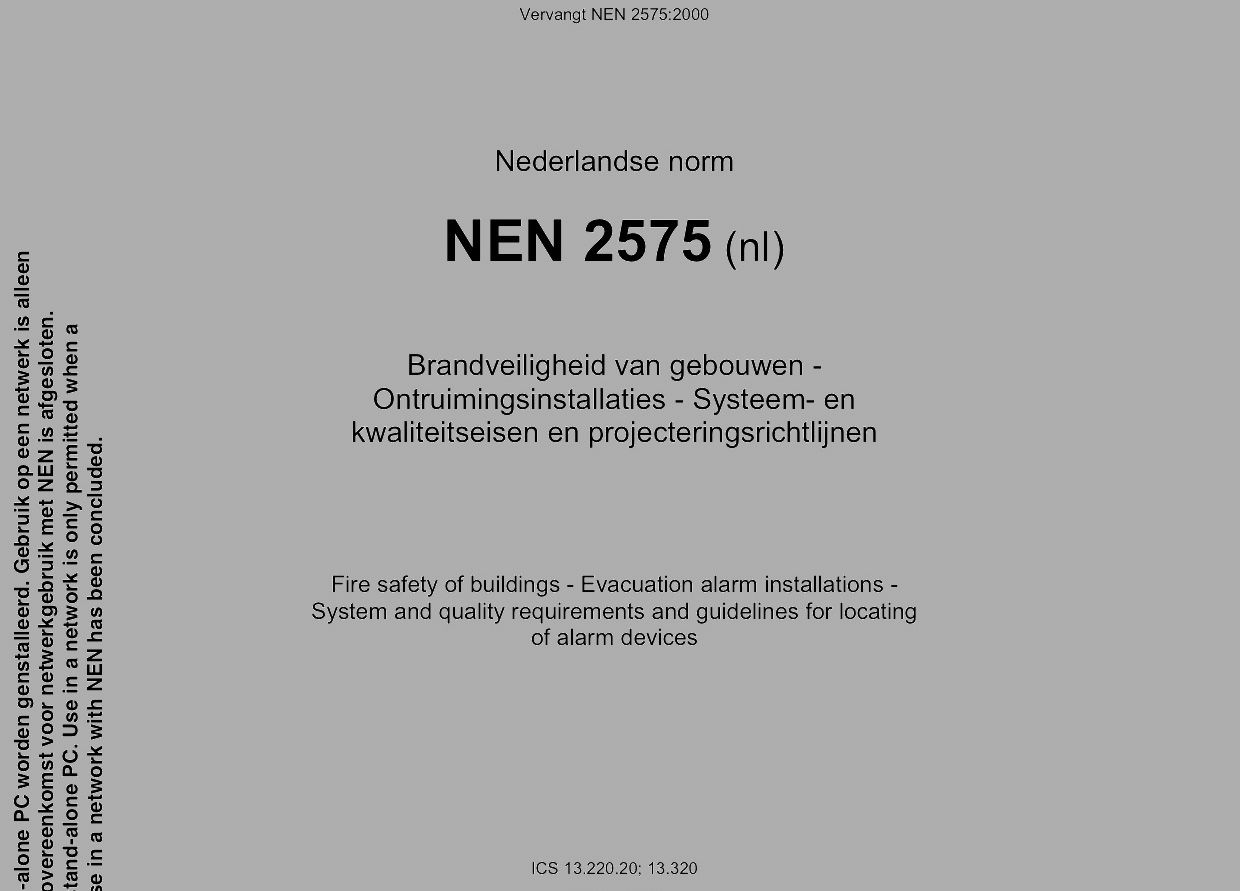nemo censetur ignorare NEN-normen
When the new Building Decree came into force in 2003, we asked our intern to download all the PDFs containing the text of the Building Decree, print them out and have them bound in a practical format. And, while they were at it, to also print and bind the new Housing Act, the explanatory notes to it, the Spatial Planning Act and some NPRs, particularly those relating to the EPN. This brought our agency completely up to date with the latest rules and regulations in the field of construction. Five years later, we are still using our self-compiled telephone directories, now full of notes and post-it notes, and when things get complicated, we take a look at the VROM website. It's very handy to search for the right usage function if you want to find out what the ventilation rate of a nursery should be. In addition, we still have our secret stacks of copies, of course. For example, a bunch of crumpled and heavily thumbed A4 sheets with the NEN 2075, so we can check whether we still meet the daylight requirements if we have designed a balcony above windows, or closed loggias, or just a large roof overhang. The NEN 2768 (how big a meter cupboard should be) is usually on top of that stack. This is because we once designed a meter cupboard measuring 2 by 3 metres. In our opinion, the requirements were the minimum dimensions, but in this utility room with a few metres in one corner, the NUTS installers did not want to make any connections until we had a KOMO KIWA-BRL3801
I'm not really sure how we got all those copies. I think most of them were given to us by colleagues, or brought in by interns (students and staff in Delft have free access to all NEN standards online). I once understood that you're not actually allowed to have those copies. That's because those standards are copyrighted. People earn money from them. To be precise, the Dutch Standardisation Institute. It is a foundation, but it is still strange that you can view and print laws for free, and now also case law and arbitration cases for the construction industry, but if a law states: You must comply with NEN XX, you suddenly have to pay for that NEN XX. For a small agency, it is not feasible to subscribe to all these standards; you pay through the nose for things that you sometimes only need once every ten years. Certainly, an architectural firm that practises the profession across the board will quickly need a huge stack of standards. These standards cover everything from tiles to ventilation, from watertightness to colours, from bricks to wood, and from concrete to plastic, not to mention health and safety regulations. The Building Decree alone refers directly to some 70 standards. For a small building, if you want to do everything by the book, you would quickly have to consult around 100 standards.
NEN itself has now also identified this gap in the market and has been offering "Standards translated into practice" booklets for some time. For just €429 (down from €573), you get nine practical guides to the Building Decree and you are completely up to date again. More appealing is the action taken by Knooble Bouw, which, together with the consultancy and engineering firm CBB (Centraal Bureau Bouwtoezicht), has initiated legal proceedings against the state with the aim of obtaining free legislation, i.e. free standards. This case has now been running for more than two years. A ruling has been postponed for the sixth time (the judge is apparently having difficulty with it) and is likely to be handed down on 8 October 2008. "nemo censetur ignorare legem" (Everyone must know the law) and that is now easier, cheaper and simpler than ever via the internet, but if the law consists of standards, we suddenly have to pay substantial amounts and gather the legal texts elsewhere.
Jasper de Haan September 2008
This article appeared in: Archined
